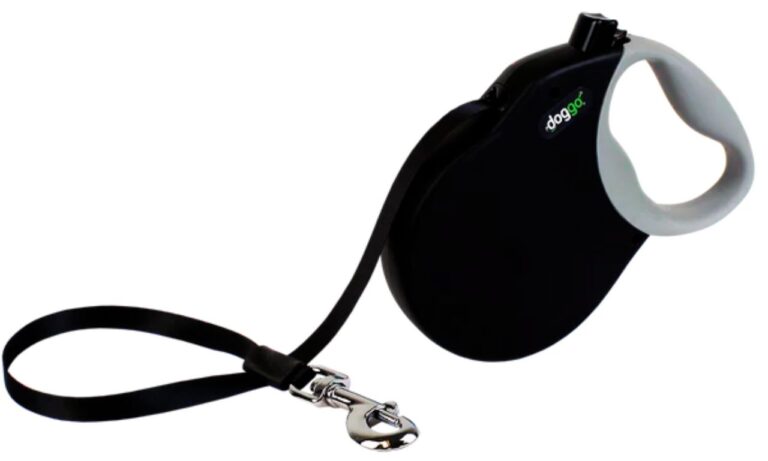The debate about whether to use a dog shock collar on a dog has long divided pet owners and trainers. Proponents of the method claim that it’s an effective tool for controlling undesirable dog behaviors, such as excessive barking or roaming, while critics argue that it is a cruel practice that harms the emotional and physical well-being of animals.
Discover if the American Eskimo is a guard dog and learn about its suitability for protecting your home.
To get to the heart of this issue, The Dodo spoke with Dr. Vanessa Spano, a veterinarian at Behavior Vets in New York City, who sheds light on the potential dangers of using shock collars. According to Dr. Spano, there are far better and more humane ways to train dogs, and using a shock collar should be reconsidered for the sake of your dog’s health and happiness.
Blog Highlights
ToggleThe Truth About Dog Shock Collars
Shock collars, also known as electronic collars or e-collars, are often marketed as a quick solution to correct unwanted behavior in dogs. These devices work by delivering an electric shock, vibration, or sometimes a sound to a dog when they exhibit undesirable behavior, such as barking or running away from home.

Quick Fixes for Alternatives to Dog Shock Collars
This method falls under the category of “positive punishment” in behavioral science, which means it works by introducing an aversive stimulus to discourage a behavior. In the case of shock collars, the idea is that the dog will associate certain behaviors with the discomfort of a shock or vibration and will eventually stop doing them in order to avoid the unpleasant sensation.
Learn about the size collar for an American Eskimo to ensure a perfect fit and comfort for your dog.
“Because many animals are smart and can make associations, the idea behind using a dog shock collar is that the dog will associate a behavior—like barking—with an unpleasant stimulus, such as vibration or shock,” Dr. Spano explained.
While this might seem like an effective way to stop unwanted behaviors, the reality is that this type of training does not teach the dog what they should do instead, nor does it address the underlying causes of the behaviors.
Why Shock Collars Are Inhumane
The central ethical concern with shock collars is the discomfort and pain they cause to dogs. Some people who advocate for the use of shock collars may argue that the shocks are mild and that the device can be tested on humans first to gauge its severity. However, Dr. Spano emphasizes that this is not a valid argument.
“Anything that causes your dog pain or discomfort is inhumane,” Dr. Spano said. “Even vibrations are considered punishment and are ‘unpleasant.’”

Discover why Afghan Hound collars are wide by exploring the unique characteristics of this breed and how wide collars enhance their comfort and style.
It’s important to remember that dogs, like humans, can experience emotional distress. When shock collars are used to stop barking, for instance, they punish the dog for trying to communicate.
Dogs bark for many reasons, such as to alert their owners to danger, express excitement, or alleviate boredom. By suppressing this behavior through painful stimulation, we are preventing dogs from expressing their natural instincts and needs.
“Shock collars are inhumane because they suppress the animal from communicating something they feel the need to communicate,” Dr. Spano pointed out. “Imagine you wanted to scream because you suspected a threatening figure was coming into your home, but you decided not to because you didn’t want to face punishment. How would that feel? That’s what you’re doing to your dog.”
Using fear to correct behavior is a form of treating fear with more fear, akin to going to a therapist only to be yelled at. It is a counterproductive method that harms the relationship between pet and owner.
The Psychological Impact of Shock Collars
In addition to the physical discomfort caused by shock collars, there are significant psychological impacts that should not be overlooked. Dogs are highly sensitive animals, and the use of shock collars can create long-term negative effects on their emotional health.

Shock collars can:
- Increase Anxiety: Dogs that are already anxious may become more fearful or stressed when subjected to the unpredictable and painful stimulation of a shock collar.
- Worsen Behavioral Issues: If a dog’s behavior is driven by anxiety, fear, or stress, using a shock collar can exacerbate those emotions, leading to a cycle of worsening behavior.
- Cause Frustration: Dogs may not understand why they are being punished, leading to confusion and frustration. This can result in behavioral regressions or new problems, such as aggression or withdrawal.
For example, a dog that barks out of fear or stress may become even more anxious when punished for barking, which only reinforces the unwanted behavior in the long term. Shock collars fail to address the root cause of the behavior, leaving the dog without the opportunity to learn healthier coping mechanisms.
Find out what style dog collar is best for hounds to ensure comfort and safety for your furry friend.
Alternatives to Shock Collars
Instead of relying on a shock collar to correct unwanted behavior, there are numerous alternative methods that focus on positive reinforcement, understanding, and communication. Dr. Spano stresses the importance of positive, reward-based training methods, which can teach dogs what behaviors are expected without causing them harm or distress.

If your primary concern is keeping your dog within a certain area (for example, preventing them from wandering away from home), consider using a GPS collar instead. These collars allow you to track your dog’s movements without subjecting them to painful stimuli. One such product is the Fi collar, which retails for $149.00 and offers real-time tracking through a smartphone app.
For addressing behavioral issues, Dr. Spano recommends techniques that focus on teaching dogs what they should do instead of punishing them for what they shouldn’t. “Shock collars may teach the animal what not to do, but they don’t teach the animal what to do instead,” she said. “There are no coping mechanisms being learned.”
Some alternatives include:
- Desensitization: This involves gradually exposing your dog to the stimuli that trigger their undesirable behavior, helping them become more accustomed to those triggers over time.
- Relaxation Protocols: Teaching your dog how to calm themselves through relaxation exercises can help alleviate anxiety and other behavioral problems.
- Reward-Based Training: Instead of punishing unwanted behavior, reinforce positive behavior by offering treats, praise, or playtime when your dog behaves in a way you want to encourage.
If your dog’s behavior problems are particularly severe—such as incessant barking or extreme separation anxiety—it may be worth consulting with a veterinary behaviorist or professional trainer who specializes in behavior modification. These experts can provide personalized guidance and develop a tailored plan for addressing your dog’s specific needs.
The ideal size collar for English Springer Spaniel typically ranges from 14 to 20 inches, depending on the dog’s age and neck size, ensuring a comfortable and secure fit.
The Bottom Line
While the idea of using a dog shock collar to control your dog’s behavior might seem like an easy solution, it is ultimately harmful both physically and emotionally. Shock collars fail to address the root causes of behavioral issues and can lead to increased anxiety, confusion, and fear in your dog. There are far more effective and humane ways to train your dog, such as positive reinforcement, behavior modification, and proper training techniques.
The recommended size collar for an English Cocker Spaniel usually ranges from 12 to 18 inches, providing a snug and comfortable fit for your dog.
Dr. Spano urges dog owners to reconsider the use of shock collars, stating, “I understand and sympathize with people who are dealing with a behaviorally unhealthy pet, but please consider speaking with a veterinary behaviorist first. There are better ways to help your dog that don’t involve pain or punishment.”
Ultimately, your dog’s well-being should be your top priority. By choosing methods that focus on understanding, patience, and positive reinforcement, you can help your dog become a well-behaved and happy companion without resorting to harmful training methods.
Want more on animal behavior and training tips? Visit our website for expert advice and resources!








